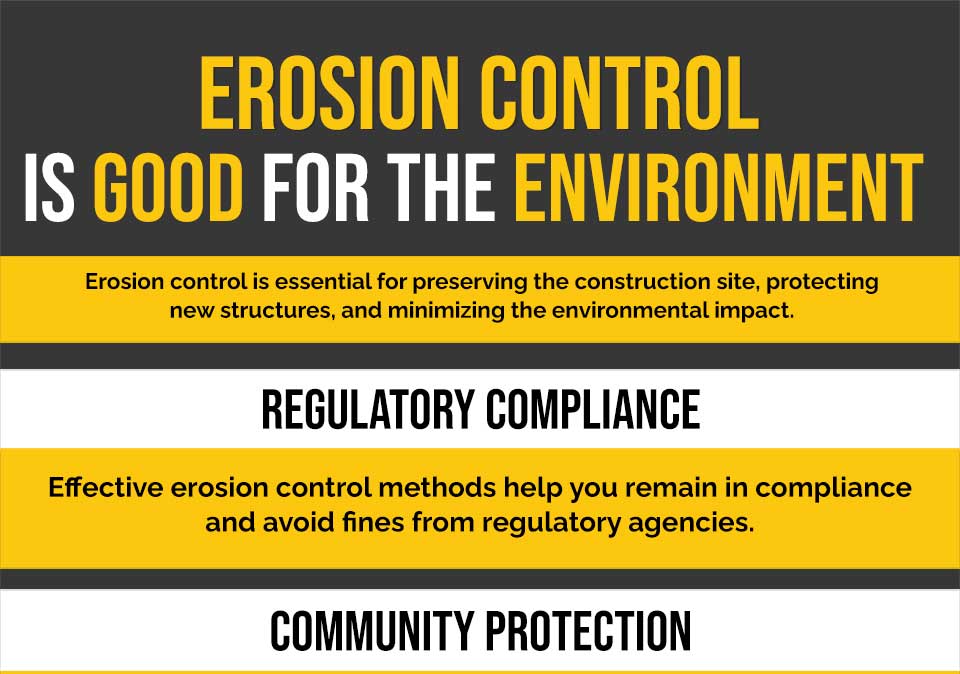
Why Hiring an ADA Contractor is Important
April 2, 2021
Why You Need an Erosion Control Contractor
April 2, 2021What is a Storm Water Pollution Prevention Plan (SWPPP)?
Stormwater pollution prevention plan, abbreviated as SWPPP or SWP3, is an erosion and sedimentation control plan for construction activities. It corresponds to the erosion and sedimentation requirements of the United States Environmental Protection Agency (EPA) Construction General Permit or local standards and codes. The plan should illustrate the measures to be applied to achieve the following objectives:
Prevent soil erosion during construction by stormwater runoff, including protecting topsoil by stockpiling for reuse.
Prevent air pollution with dust and particulate matter.
Any construction project, whether it is commercial, residential, or industrial covering more than 1 acre of land is required to have an SWPPP and city or state permit. When you have such construction projects in mind, then hiring an experienced and knowledgeable engineer is vital to the success and in meeting the permit requirements. Also, they follow the right stormwater pollution prevention plan and best management practices for the right outcome.
Let us look at what the stormwater pollution prevention plan includes.
Storm Water Pollution Prevention Plan
The primary reason to develop an SWPPP is for regulatory compliance with federal, state, and local stormwater management regulations and to avoid the fines imposed on non-compliant project sites. With SWPPP in place, you can reduce the harm your construction site’s pollutants pose on the environment by identifying potential sources of pollution and design Best Management Practices (BMP) to reduce the pollution. An effective SWPPP is a key to preventing stormwater pollution. Here is what is included in the Storm Water Pollution Prevention Plan.
Silt Fence
A silt fence is a porous fence that is placed vertically surrounding the construction sites. It is held in place with wooden posts acting as a sediment control device. When the stormwater runoffs the construction site, the silt fence traps the suspended solid particles allowing clean water to flow into the nearby water bodies.
Straw Wattle
Another measure implied for stormwater erosion control is flexible tubes filled with straw known as a straw wattle. It is typically placed on the slopes and inclines that allow the water to pass through it leaving all the sediments behind. Straw Wattle can be packed with a variety of substances and this stormwater erosion control method is most used along California’s highways.
Rock Bags
Rock bags are usually used around storm drains. When stormwater or other construction site water runoffs, rock bags act as a filtration system permitting water to pass through while leaving behind sediments.
Street Sweeping
Particles can build up in front of a sediment trap and when stormwater of other types of water runoffs from the construction site, it flows over instead through the erosion control device. Street sweeping is an efficient method to remove all the debris.
This is how Storm Water Pollution Prevention Plan works. If you are looking to implement SWPPP at your construction site, then get in touch with Eagle Paving today. We can help you develop an effective plan and decide which BMPs to incorporate and implement while staying on budget.




